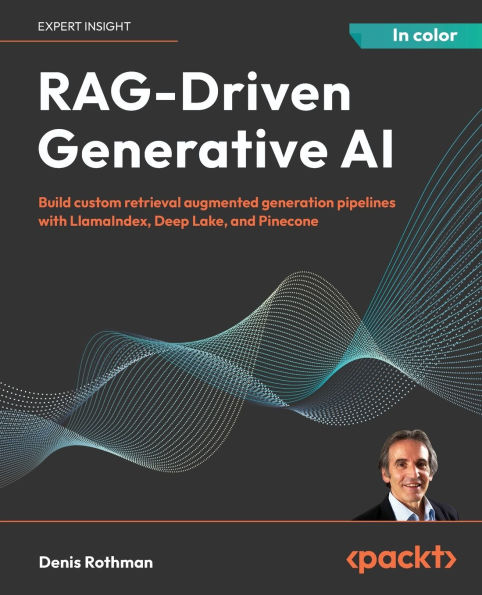LangChain and RAG LLMs: A Powerful Combination for AI Application Development
Introduction
In recent years, the rapid advancement of artificial intelligence (AI) has led to the development of increasingly sophisticated language models.1 One such innovation is the Retrieval Augmented Generation (RAG) framework, which leverages the power of large language models (LLMs) to generate more accurate and informative responses by incorporating external knowledge sources. LangChain, an open-source framework, provides a versatile toolkit for building applications powered by LLMs and RAG.
This white paper explores the synergy between LangChain and RAG LLMs, highlighting their potential to revolutionize AI application development. We will delve into the key concepts, benefits, and practical applications of this powerful combination.
Understanding LangChain and RAG LLMs
LangChain
LangChain is a framework that facilitates the development of applications powered by language models. It offers a modular approach to building and deploying LLM-based applications, enabling developers to:
- Prompt Engineering: Craft effective prompts to elicit desired responses from LLMs.
- Document Loading: Integrate external knowledge sources such as documents, PDFs, and databases.
- Retrieval: Retrieve relevant information from these sources to enhance LLM responses.
- Execution: Execute code or other actions based on LLM outputs.
RAG LLMs
RAG LLMs are a class of language models that leverage external knowledge sources to improve their responses. They work by:
- Retrieving Relevant Information: Identifying the most relevant information from a knowledge base.
- Processing the Information: Understanding and processing the retrieved information.
- Generating a Response: Combining the processed information with the LLM's knowledge to generate a comprehensive response.
The Power of LangChain and RAG LLMs Together
When combined, LangChain and RAG LLMs offer a potent solution for building sophisticated AI applications. Key benefits include:
- Enhanced Accuracy and Relevance: RAG LLMs provide more accurate and relevant responses by incorporating external knowledge.
- Improved Factual Correctness: By grounding responses in real-world data, RAG LLMs reduce the risk of generating hallucinations or incorrect information.
- Increased Flexibility and Customization: LangChain's modular design allows for customization and tailoring of LLM applications to specific use cases.
- Efficient Knowledge Integration: LangChain simplifies the process of integrating and managing external knowledge sources.
- Scalability and Performance: Both LangChain and RAG LLMs are designed to handle large-scale applications and high-performance workloads.
Practical Applications
The combination of LangChain and RAG LLMs has a wide range of potential applications across various industries:
- Customer Service Chatbots: Build chatbots that can access a knowledge base to provide accurate and informative answers to customer inquiries.
- Document Summarization and Question Answering: Create tools that can summarize lengthy documents and answer questions based on their content.
- Search Engine Optimization: Develop search engines that understand the context of queries and return relevant results.
- Content Generation: Generate high-quality content, such as articles, reports, and code, by leveraging external knowledge.
- Personalized Recommendations: Build recommendation systems that consider user preferences and external information to provide tailored suggestions.
Challenges and Future Directions
While LangChain and RAG LLMs offer significant potential, there are challenges to address:
- Data Quality and Relevance: Ensuring the quality and relevance of external knowledge sources is crucial.
- Prompt Engineering: Crafting effective prompts remains a complex task, requiring careful consideration.
- Ethical Considerations: Addressing biases and ensuring fairness in LLM outputs is essential.
Future research and development in this area may focus on:
- Advanced Retrieval Techniques: Exploring more sophisticated methods for retrieving relevant information.
- Contextual Understanding: Improving LLMs' ability to understand the context of queries and generate more nuanced responses.
- Ethical AI: Developing guidelines and tools to mitigate biases and ensure ethical AI practices.
Conclusion
LangChain and RAG LLMs represent a powerful combination for building advanced AI applications. By leveraging the strengths of both technologies, developers can create innovative solutions that deliver significant value. As the field continues to evolve, we can expect to see even more groundbreaking applications emerge.
References and Further Reading
- LangChain: https://www.langchain.com/
- Hugging Face: https://huggingface.co/
- Research Papers:
- "Retrieval-Augmented Generation for Knowledge-Intensive Tasks" by K. Lewis et al.
- "Language Models as Knowledge Bases?" by J. Devlin et al.
- White Papers and Blogs:
- OpenAI Blog: https://openai.com/blog/
- Google AI Blog: https://ai.googleblog.com/
By staying informed about the latest advancements in AI and leveraging the power of LangChain and RAG LLMs, developers can unlock the full potential of language models and create innovative applications that drive positive impact.



